An Old-Fashioned Sampler
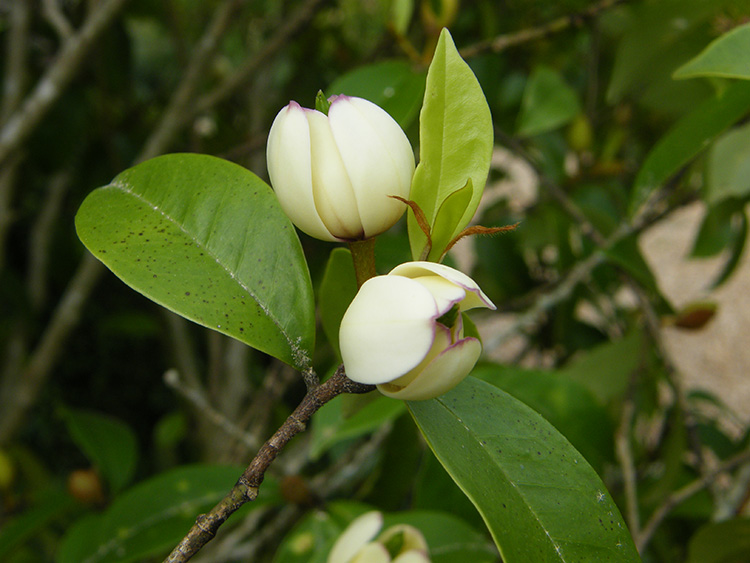
There is a small stone tucked beneath a step in a nook near the Callaway home engraved with the words ‘Gram’s Garden.’ Given to Alice Callaway as a gift from some of her cherished family,
it is a palpable reminder to those who see it that the historic garden at Hills & Dales, with all of its beauty and imperfections, is endowed with the sentiment and memories of generations.
It became, with each of the three women that tended it so lovingly, a grandmother’s garden in the minds of their families. And even though a public garden now, visitors are often charmed, reminded or perhaps both, by the “step back in time” it provides. Offered here is a trio that elicits comments every year; perhaps one will do in your landscape, or will trigger an evocative
remembrance.
I’ll begin with true bridal wreath, Spiraea prunifolia ‘Plena’, whose white blossoms stud its otherwise bare branches in profusion come early spring. Native to Asia, bridal wreath was brought to the US by the mid-1800s and quickly became in demand. With buds that open along with Forsythia (and before either of the more common Vanhoutte or Reeves spireas) it is one of our most asked about shrubs when flowering, and one that holds sweet, early memories for me. My great-grandmother had one in her yard, and I remember discovering it in bloom
so clearly, particularly the delight I found in its small yet perfect little flowers. They looked like miniature white roses to me, and I was completely enchanted. Bridal wreath has slender
arching branches, grows 4-8’ high and as wide. It is not a high-maintenance shrub, has few disease or insect issues, and is quite drought tolerant once established. Pruning should be done
soon after flowering is over, as it blooms on stems that are one or more years old. With the arrival of fall, the foliage turns shades of gold and orange. Site it in full sun to light shade for plenty of blooms that are great to cut and add to spring arrangements.
Magnolia figo, better known as banana shrub, is a spring and intermittent summer bloomer whose flowers look like diminutive southern magnolia blossoms. However, whereas southern magnolia blooms have a lemony scent, banana shrub perfumes the air with the aroma of banana taffy. Native to China, it was introduced into cultivation in the US in the late 1700s, and is now considered a classic southern heirloom, due in part to its affinity for our warm climate. We have documentation that banana shrub has been grown in our garden since the 1800s, planted here originally by Sarah Ferrell who began the formal terraced garden in 1841. Ida Cason Callaway cultivated it also, and family stories about her love of bananas lead us to think that she likely cherished this small magnolia that smelled of her favorite fruit. Banana shrub can be grown where winter temperatures rarely dip below the teens, the general recommendation being for USDA zones 8-10. (LaGrange is in Zone 8a.) Magnolia figo var. skinneriana is a more cold hardy form that is gaining popularity and will reportedly withstand occasional single digit lows. This extends banana shrub’s growing range into Zone 7b which, in Georgia, only excludes the mountainous counties farthest north. Capable of growing to heights of 8-15’ and widths of 10’, it should be planted in full sun to light shade and given room to develop into the handsome evergreen specimen it
was intended to.
Flowering quince (Chaenomeles speciosa and C. japonica) rounds out this sampling of old-fashioned favorites. It is also native to the Far East and prized for their gardens and
as good bonsai candidates. Flowering quince came to our shores in the 1800s and became very popular due to its beauty, adaptability and tough-as-nails constitution. A member of the rose
family, most have single flowers with five petals, and are available in shades of pink, salmon, red, orange or white. Cut branches look superb in flower arrangements, adding an Asian flair
with their rather zigzagging habit, and will “force” very easily. Given a site with good drainage and sun, they will grow almost anywhere. However, in the Deep South we don’t have to wait until spring to enjoy their cheery color, as our typically mild late winter weather begins coaxing the flowers to open much earlier than those growing in northern gardens. With choices that range from 3-4’ to 7-8’ in both height and width, there is a size option for just about every space. One caveat with these plants is their wicked thorns, however this characteristic is one reason the
taller forms are recommended for use as barrier hedges. Pardon the pun, but if that is the only sticking point to considering flowering quince, be aware that newer introductions out of North
Carolina State University offer double flowers and no thorns. What comes to your mind at the thought of Grandmother’s garden? Is it a memory already made or perhaps one that could be planted for someone’s future? Each of the three shrubs above offer vintage allure to the landscape and have stood the test of time. However, just in case one more selling point is needed, we have it: all three are deer resistant!
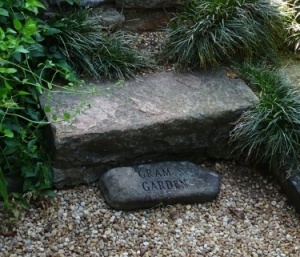
Gram’s Garden Stone |
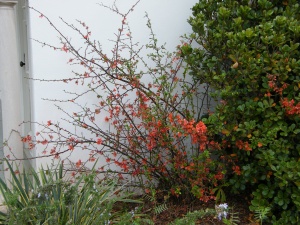
Orange Flowering Quince |
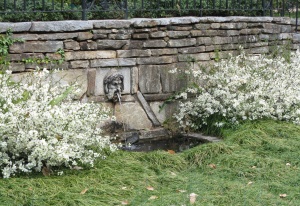
While Flowering Quince |
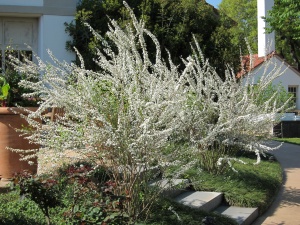
Bridal Wreath Spirea |
View this entire Portico Newsletter: